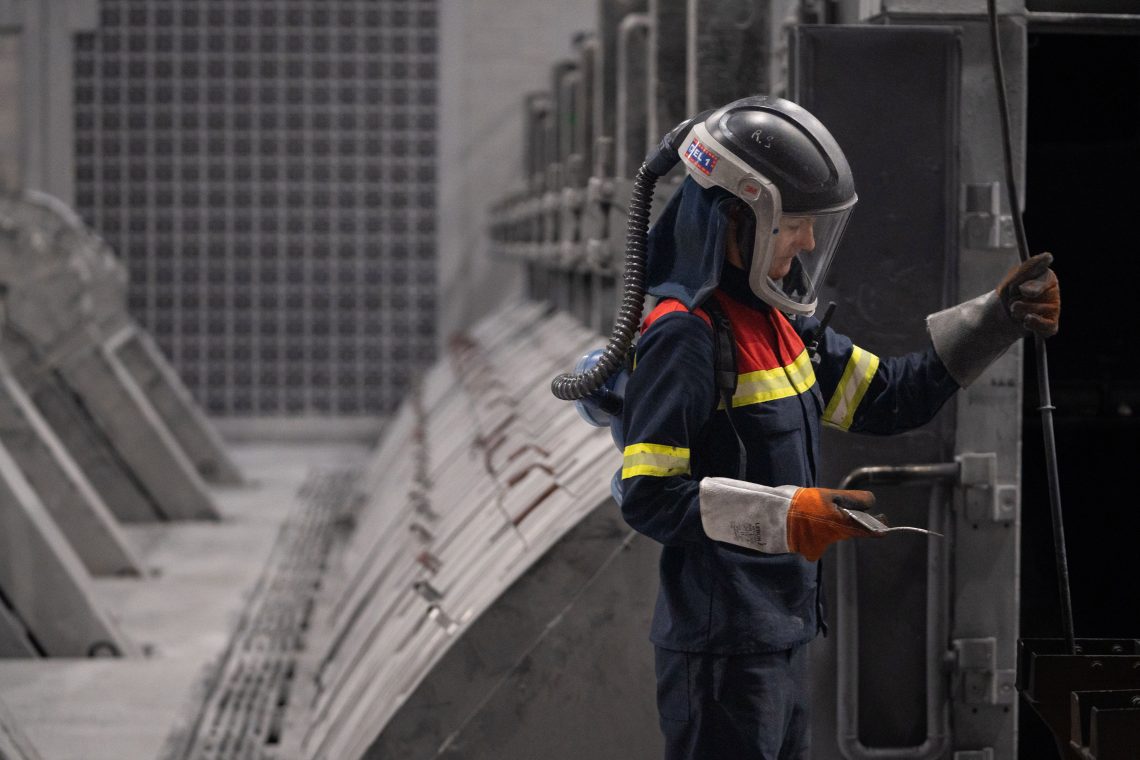CBAM will expedite carbon leakage
The EU’s Carbon Border Adjustment Mechanism will likely have an adverse effect on both the climate and the economy.

In a nutshell
- The CBAM will increase costs and disrupt the EU’s competitiveness
- More carbon leakage, reduced export potential are likely outcomes
- Alternatives offer more balanced solutions for climate and trade
The European Union’s Carbon Border Adjustment Mechanism tariff (CBAM) aims to integrate climate action with trade regulations, but the approach is not without potential repercussions.
On October 1, 2023, the first transitional phase of CBAM came into effect. For now, it will only apply to certain goods: cement, iron and steel, aluminum, fertilizers, electricity and hydrogen. By 2026, its scope is anticipated to expand, covering over 50 percent of emissions from sectors included in the EU’s Emissions Trading Scheme (ETS).
The EU instituted the CBAM with the purported goal of mitigating “carbon leakage,” a phenomenon occurring when businesses shift production to countries with laxer emission constraints to lower costs. The rationale is that the aforementioned goods are highly susceptible to carbon leakage. Higher duties on imports levels the playing field for EU producers and their international counterparts. At least, this is the explanation given by Brussels.
The underlying logic of the CBAM is intricately tied to the ETS. In this scheme, industries like aluminum production are required to purchase allowances for their carbon dioxide emissions. The cost of these credits, known as Emissions Allowance Units (EUAs), reached an all-time high of more than 100 euros per metric ton in February 2023, stabilizing at around 85 euros by November 2023. Consequently, an EU-based aluminum producer would pay approximately 85 euros for every ton of CO2 emitted during production.
However, this cost dynamic changes when aluminum is imported from outside the bloc. In such cases, the overseas producers do not incur similar emissions costs, making their aluminum cheaper in the EU market. This price disparity leads to carbon leakage, EU buyers importing cheaper aluminum and undermining European producers and potentially jeopardizing their viability.
To counteract this risk, the CBAM imposes a duty on imported aluminum, effectively balancing the cost discrepancy between the EU’s internal carbon pricing and the lesser or non-existent carbon costs in the aluminum’s country of origin. Imported aluminum becomes more expensive, reducing its cost advantage over aluminum produced in Europe. This approach is intended to discourage carbon leakage by diminishing the attractiveness of importing cheaper, foreign-produced goods, according to the EU’s strategic perspective.
The real cost of CBAM
The problem with the logic underpinning the CBAM is that it is faulty. To begin with, the competitive disadvantage of European producers is the direct result of a political decision. The ETS inherently places them at a disadvantage in the global market. To remedy this, sectors that are particularly vulnerable to international competition could be exempted from the ETS. Alternatively, implementing domestic policies that incentivize these industries to enhance their energy efficiency could be a viable solution. Such measures would reduce their need for EUAs, alleviating the competitive pressure they face.
The economically sound answer to a burden deliberately created by domestic policies cannot be to extend this burden to all non-domestic market participants, leading to even more welfare loss. The CBAM is at its core a protectionist measure. It is unrealistic for the EU to expect an increase in industrial competitiveness while simultaneously curbing competition.
Read more by Henrique Schneider
Scenarios for AI adoption
Climate barriers to global trade
Even as a climate policy tool, the CBAM is poorly designed. Currently, revenue generated from the mechanism is absorbed into the EU’s general budget. If the primary goal of the CBAM were genuinely to mitigate emissions, one would expect these funds to be allocated toward environmental initiatives in the exporting countries. However, this is not the case.
Welfare loss and rent seeking
Import duties increase prices and cause what economists refer to as “welfare loss.” In the CBAM’s case, a portion of this welfare loss is intentional. The EU aims to curtail the production of commodities like aluminum or cement. This reduction is achieved through the ETS and CBAM, which lower production levels by increasing costs. These higher prices ripple through the economy until they reach the consumer, who pays more for less – and when competition is scarce, quality decreases as well.
Furthermore, the CBAM triggers another form of welfare loss. By distorting economic incentives, the mechanism will lead to rent-seeking – when companies divert money from the production process to gain political influence. Such behavior distorts the market process and leads to an overall decrease in welfare.

This welfare loss is already a reality. Importers into the EU are facing more bureaucracy and higher prices for CBAM certificates. Meanwhile, several industrial sectors in the bloc have stepped up their lobbying: they want even higher taxes on imports and a portion of the money collected from these taxes to be given back to them.
CBAM’s role in carbon leakage
However, the biggest issue with the CBAM is not its flawed logic or the economic losses it causes. The main problem is carbon leakage. The mechanism unintentionally motivates businesses to shift their focus to products that have carbon costs included in their production process, but which are not covered by the CBAM.
Because of the way the CBAM is set up, importers are encouraged to bring in finished products that do not fall under the mechanism, rather than intermediate goods that do. For example, a car manufacturer paying the import duty for aluminum might find it cheaper to produce the entire car abroad and import it without having to pay the CBAM charges.
On a technical note, the way the CBAM calculates emissions can also lead to carbon leakage, even without changes in how products are made or where. An aluminum plant could reduce its reported carbon footprint simply by switching from generating its own energy to using electricity from the grid, even if that electricity comes from a coal-powered plant. This happens because, in industries like aluminum, the CBAM currently only considers direct emissions.
Scenarios
Most likely: The EU continues to implement the CBAM
The CBAM will most likely be expanded to cover around 50 percent of the ETS industries, and also include both direct and indirect emissions. On the one hand, this will calculate emissions more accurately, but on the other, it will accelerate carbon leakage and substitution through imports.
In this scenario, countries exporting to the EU will retaliate by introducing new tariffs or demanding compensatory payments from the bloc. In such cases, there is more welfare loss on the European side and little to no climate benefits. The outcome is further de-industrialization of the EU, lower quality of life for Europeans, lost business opportunities for industries and escalating global trade frictions.
Two sub-scenarios may unfold and partially overlap. A very likely turn of events is that some other jurisdictions will follow the EU. Canada, the U.S. and the European Free Trade Association have expressed their interest. Even the World Bank Group and the World Trade Organization (WTO) are considering scenarios in which developed countries introduce CBAM. This would mean a slowdown in global trade and welfare losses for all countries involved.
In another sub-scenario, developing countries retaliate against the EU by introducing CBAM on their own, or block international negotiations on climate or trade with demands for financial compensation. This increases the welfare losses from CBAM for the EU and worsens geopolitical tensions. Countries such as Turkey or India have already started using CBAM as a negotiating chip in the WTO and climate policy frameworks. Others will likely follow suit. Global trade may shift south to circumvent the EU.
Less likely: The EU implements an alternative
The EU often presents the situation as if there are only two choices: either implement the CBAM or do nothing to link climate policy with trade. But there are several other options available. One such alternative is the set of measures outlined in Article 6 of the Paris Agreement, known as “Cooperative Approaches.” These approaches focus on turning results from climate actions into something that can be traded in the market. Another more direct method is the Agreement on Climate Change, Trade, and Sustainability (ACCTS), which aims to combine trade and climate efforts more closely. Countries like New Zealand, Costa Rica, Fiji, Iceland, Norway and Switzerland are already participants of this agreement.
In addition, a new proposal, named the “Climate and Freedom Agenda,” was introduced at COP28. The document suggests using a mix of regulatory “sandboxes” (safe spaces for experimenting with new regulations), tax breaks and loans to encourage investments in climate-friendly technologies. The idea is that by increasing trade in a smart way, policymakers can boost climate action and improve overall economic welfare, not reduce it.
Of course, these alternatives could also potentially lead to welfare loss and rent-seeking. However, because they are more economically sound, they are more likely to be effective in aligning trade policies with climate action.
For industry-specific scenarios and bespoke geopolitical intelligence, contact us and we will provide you with more information about our advisory services.








